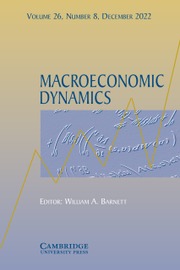No CrossRef data available.
Article contents
Rising government debt on the path of going green in China
Published online by Cambridge University Press: 27 November 2024
Abstract
In this study, we examine how local government debt responds to environmental policies in China. We show that when an environmental policy impacts the economy, local governments are likely to increase debt issuance, with this effect becoming stronger when local officials have greater career incentives within the Chinese bureaucratic system. Over-accumulation of local government debt, which leads to social welfare losses, is closely tied to the urgency local officials feel to secure promotions. Our analysis offers valuable insights for better coordination between fiscal and environmental policies.
- Type
- Articles
- Information
- Copyright
- © The Author(s), 2024. Published by Cambridge University Press


